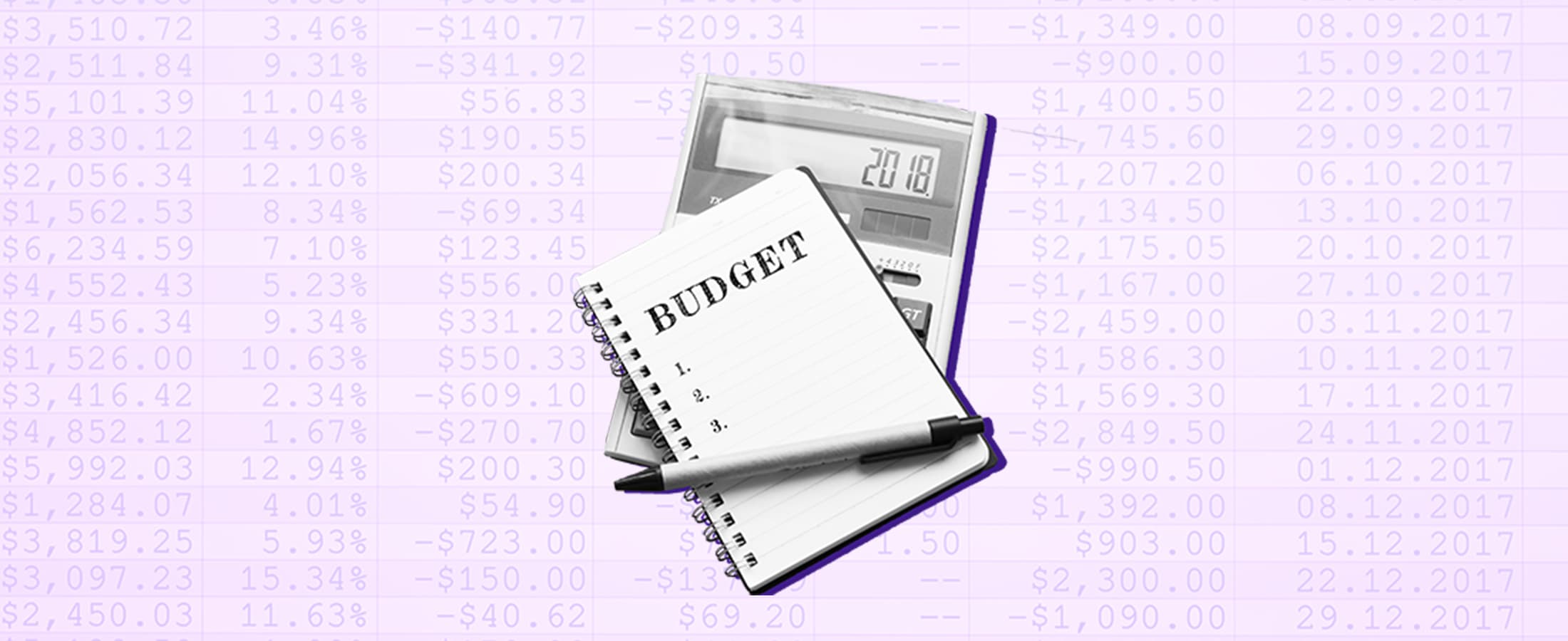Mar 27, 2020
How to Budget For a Rainy Day
Make sure you have a rainy day fund and cut nonessential spending.

Following a budget can be hard enough when the economy is strong, but it can become even more difficult when you’re budgeting following a layoff, reduced hours, or some other financial uncertainty.
As businesses such as restaurants, salons, car dealerships, and more have shut their doors to stop the spread of Covid-19, nearly 3.3 million Americans have lost their jobs (temporarily or not). Here are some tips on how to budget when the economy is volatile:
Build your budget
If you don’t have a budget, now is the time to create one. You may not be able to control the news, but you can and should control your spending. And a budget can act as a financial blueprint, guiding your everyday life and spending habits, helping you stay on track with saving and investing goals.
There are various different budgets you can use including the 50-30-20 budget (a percentage-based budget) or the zero-sum budget. No matter which one you choose, start by figuring out how much money you have coming in each month. Then determine how much you spend on essential or fixed expenses, how much you spend on variable or nonessential expenses, and how much you want to save.
As you’re taking into consideration a volatile economy, you may want to allocate more of your monthly budget to savings and cut down on nonessential expenses to prepare for how your circumstances may or may not change.
Cut the nonessentials
Now is the time to cut down on nonessential spending, which includes spending that you do on activities or items that you want but don’t necessarily need such as Netflix, Hulu, a spiral vegetable shredder, or a workout bike you might never use.
“Work out how different crisis financial situations would play out,” says Jason Patel, founder of career prep company Transizion, based in Washington, D.C., says. “Determine what you would need if you brought in only 50% of what you currently bring home. Then try 75% and so on.” In the current economic situation, Patel suggests cutting anything that doesn’t relate to health or medicine, rent, groceries, and getting to your job.
Of course, If you’re going to be stuck inside for days at a time, you still want to leave room for some non-essential expenses, like ordering takeout or renting a movie. But maybe cut down on extraneous online shopping like buying new clothes or stuff for your home.
Access your rainy day fund
Don’t be afraid to dip into your rainy day fund or emergency fund if you experience some bumps in your financial life. That’s what these funds are for. If you don’t have one, think about creating one and start contributing to them regularly.
Remember that a rainy day fund should contain at least $500 to $1000 for you to draw on to pay down credit card debt or your rent if you have a sudden change in income. Your emergency fund should contain enough money to carry you through three to six months of all your expenses, should something such as a layoff or illness happen.
Be careful with credit cards
It’s too easy to rely on credit cards if you have a sudden drop or loss in income, but that’s probably not a good idea. At some point, you’ll need to pay off that debt. “You might find yourself wanting to lean on credit cards to get you through a financially tight period,” says Nathan Grant, a senior analyst for Credit Card Insider, Syracuse, New York. “But avoid using them for purchases you can’t pay off within a month so you don’t affect your credit and waste unnecessary money on interest fees.” If you don’t have the cash to pay off the debt, don’t spend it in the first place.
Grant also recommends staying on top of any existing debt that you might already have so that you don’t let it get out of control. He suggests making sure you’re at least paying the minimum amounts due on any credit cards or loans to prevent damage to your credit. Consider attacking your debt with the avalanche, or the snowball method. Having debt can make matters worse if you hit a rough patch.
Budgeting is just the start
The best way to weather the storm is to prepare your own finances and stay the course.
A budget can help show you the way by providing a financial structure.
Think of your financial plan as a building block that can also include longer-term goals such as investing and saving for retirement.
As you manage your money, consider the Stash Way, which encourages you to think and prepare for the long-term, while investing small amounts regularly in a diversified portfolio.

Investing made easy.
Start today with any dollar amount.
Related articles

financial-news
Apr 07, 2025
Investing During Volatile Times

financial-news
Apr 03, 2025
How to Stay the Course Through Tariffs and Turbulence

financial-news
May 15, 2024
Rebirth of the meme stock craze? 5 brutally honest reasons why you shouldn’t be buying, despite the hype

budgeting
Jan 09, 2024
9 ways to celebrate financial wellness month

financial-news
Nov 09, 2023
What is a Recession?

financial-news
May 15, 2023
The Stash Way: Invest Regularly
By using this website you agree to our Terms of Use and Privacy Policy. To begin investing on Stash, you must be approved from an account verification perspective and open a brokerage account.
